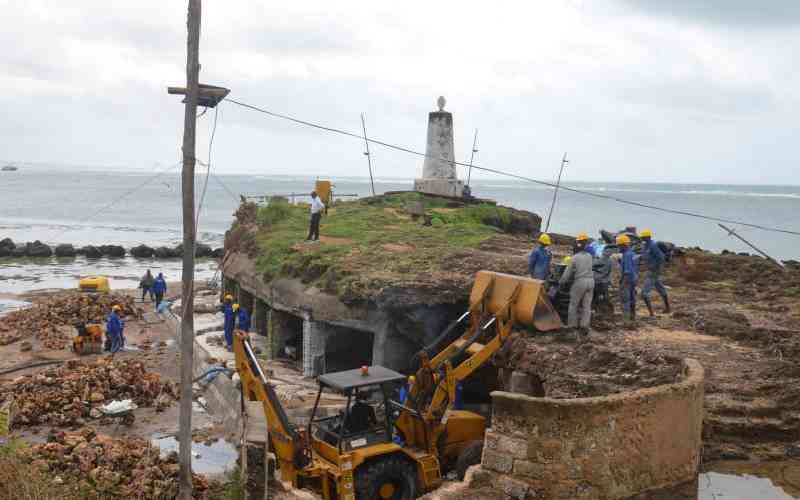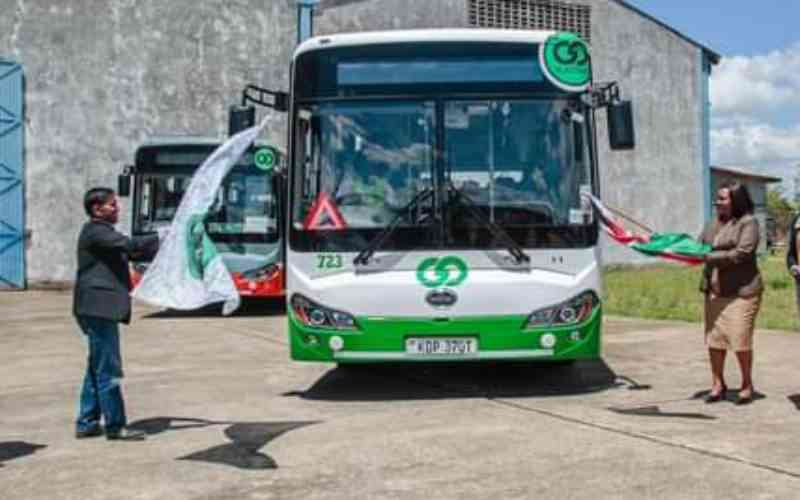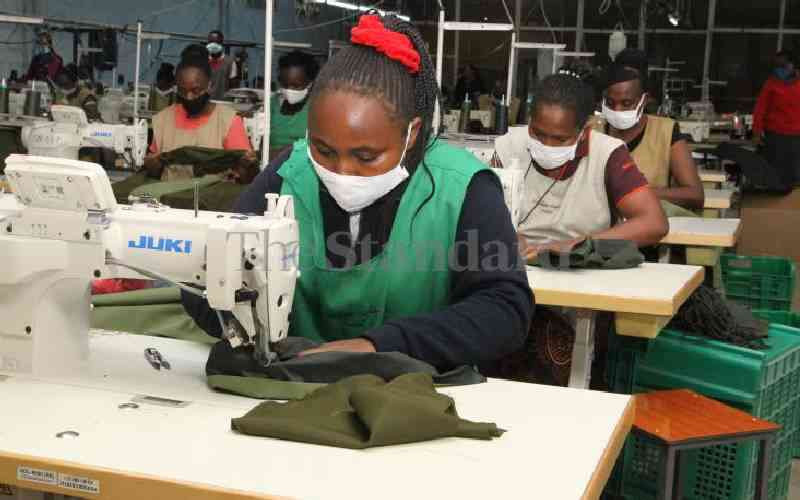
Packaging products in small quantities and selling them to low-income earners in what has been fashioned as the kadogo economy has become lucrative with firms across various sectors make a killing.
From the manufacturers of fast moving consumer goods to telecommunications firms and financial services, poor households have proved to be the best bet to grow revenues.
This is even when the old customers appeared to have plateaued and offered little or no growth opportunities.
This model, however, seems to fall flat when it comes to the energy sector.
Perhaps by bad luck due to poor execution of strategies or possibly having misread the market. Private sector firms and even Government entities that have introduced into market products aimed at to transit-poor homes from dirty fuels such as kerosene and charcoal to cleaner liquefied petroleum gas (LPG) end up reporting epic fails.
Some only last so long before cutting their losses and calling it quits.
Early 2012, a local firm launched what was then seen as a revolutionary product that was meant to transit many households from using charcoal and kerosene to the cleaner LPG.
Premier Gas – an affiliate of the oil marketer Gulf Energy – with the backing of the International Finance Corporation introduced Pima Gas, which enabled consumers to make partial refills of cooking gas.
While not entirely the first clean energy product that was targeted at low-income households, the one-kilogramme cylinder was hailed as among the innovative solutions needed to successfully transit charcoal users to LPG.
A key feature was its partial refills, whereby one could refill depending on how much money they have at a time.
Being able to partially refill gas cylinders was hyped as the major attraction for low-income earners and even likened to buying kerosene or charcoal, which one buys according to how much they can spare for cooking fuel at a time.
Though still in the market, Pima Gas is struggling to keep up with the buzz that characterised its launch seven years ago. A recent report by the World LPG Association noted that the product faced the challenge of guaranteeing safety to its consumers.
LPG marketing firms are required to undertake frequent revalidation of gas cylinders that bear their brands.
This happens when a customer exchanges a cylinder, which is assessed by the marketer for leakages or severe dents and repaired if need be before releasing it again to the market.
In the case of Pima Gas, it would mean that customers doing partial refills would take years before submitting their cylinders to Premier Gas.
“…an initiative in Kenya where a company called Pima Gas dispensed LPG in small quantities that could be sold for the same price as a bag of charcoal or a small pile of wood. Instead of selling a full cylinder, small amounts (100 grammes) of LPG were dispensed through a vending machine,” said the Association.
“Although imaginative, and potentially game-changing, this idea created safety challenges with respect to cylinder maintenance. The cylinder cycled between the home and the vending machine without any inspection or maintenance which was unacceptable.”
Pima Gas is not the only product that targeted at low-income households that failed to make much progress.
Different oil marketing firms have in the past had low capacity gas cylinders, particularly one for three kilogrammes.
They have however phased them out, then noting that there was little demand for the product and that it was unpopular due to the frequent refills.
However, the past analysis showed that the oil marketers enjoy much bigger margins with the sale of the larger cylinders. A 13kg cylinder gives them a margin of up to Sh700. This is in comparison to about Sh200 they would get when consumers refill a 3KG cylinder.
At some point in 2013, one of the big marketers even had a campaign swapping six-kilogramme cylinders with 13kg cylinders at a highly subsidised rate. Petroleum Principal Secretary Andrew Kamau noted while the other factors might be right, including the regulatory regime and a ready market, packaging cooking gas in smaller units is costly. This is such that when these costs are factored in the retail pricing of a product, it tends to see the low-income households pay more per kilo of gas than the wealthy households who buy in larger quantities.
“It is not economical to have a one-kg cylinder because the packaging will be so expensive. If you go to the market, you will find that the smaller the package the more you will pay for the package. At times the packaging might cost more than the content,” he said in an interview.
The popular retail cylinders in the market are the 6kg, 13kg, 22kg, and 50kg. The law also provides for the smaller capacity gas cylinders of one and three kilos.
Refilling a six kg gas cylinder currently costs between Sh800 and Sh1,000, depending on the brand and location while the 13kg is currently retailed at between Sh2,000 and Sh2,200. A project spearheaded by the State to distribute millions of gas cylinders to low-income households has faced a similar fate. The Mwanachi Gas Project, which aims at distributing six kg cylinder to low-income homes has stalled owing to multiple challenges including lack of funds and fraud.
The project, which distributes Gas Yetu branded cylinders at subsidised prices, was suspended in early 2018.
This was after a pilot phase in Machakos and Kajiado counties resulted in a dismal performance. It was expected to get back on track towards the end of last year but there are no signs that it is going to get off the ground soon.
The six-kilogramme cylinder with gas and burner was retailing at Sh2,000, a bargain compared to about Sh3,500 current market rates while refills would cost Sh840. It was aimed at reducing entry barriers to using LPG among households, with the cost of acquiring cylinders cited as a major hindrance for Kenyans willing to switch from charcoal and kerosene to LPG.
The project that was expected to have distributed cylinders to over a million households in the last financial year is yet to kick off. A pilot undertaken in Kajiado and Machakos only distributed 6,000 cylinders. The National Oil Corporation of Kenya – the implementing agency – last year said it halted the project owing to lack of mechanisms to prevent cheating.
Households that did meet the low-income criteria were issued the six-kilogram cylinders. Poor households had also taken advantage of the poor mechanisms to guard abuse and acquired more than one cylinder.
PS Kamau said this and other efforts targeted at poor homes were victims of ‘unscrupulous people who are taking advantage’. He, however, noted there are firms that are using technology to beat other businesses and even individuals that have turned the well-meaning initiatives to provide cleaner energy to low-income earners into failures.
“There have been companies that have woken up to the fact there are is a lot of potential for providing gas to the mwananchi. For instance, a company called Pro Gas has come from zero in June last year to sell 700,000 cylinders in the market,” he said.
He said they will bet on mobile money to increase the use of cooking gas, adding that the ministry was ready to restart its Mwananchi Gas Project after the determination of a court case filed by the Consumers Federation of Kenya over safety concerns.
“We will restart the process and after that, we hope to immediately distribute the 130,000 cylinders that we had bought,” said the PS.
 The Standard Group Plc is a multi-media organization with investments in media
platforms spanning newspaper print operations, television, radio broadcasting,
digital and online services. The Standard Group is recognized as a leading
multi-media house in Kenya with a key influence in matters of national and
international interest.
The Standard Group Plc is a multi-media organization with investments in media
platforms spanning newspaper print operations, television, radio broadcasting,
digital and online services. The Standard Group is recognized as a leading
multi-media house in Kenya with a key influence in matters of national and
international interest.
 The Standard Group Plc is a multi-media organization with investments in media
platforms spanning newspaper print operations, television, radio broadcasting,
digital and online services. The Standard Group is recognized as a leading
multi-media house in Kenya with a key influence in matters of national and
international interest.
The Standard Group Plc is a multi-media organization with investments in media
platforms spanning newspaper print operations, television, radio broadcasting,
digital and online services. The Standard Group is recognized as a leading
multi-media house in Kenya with a key influence in matters of national and
international interest.










